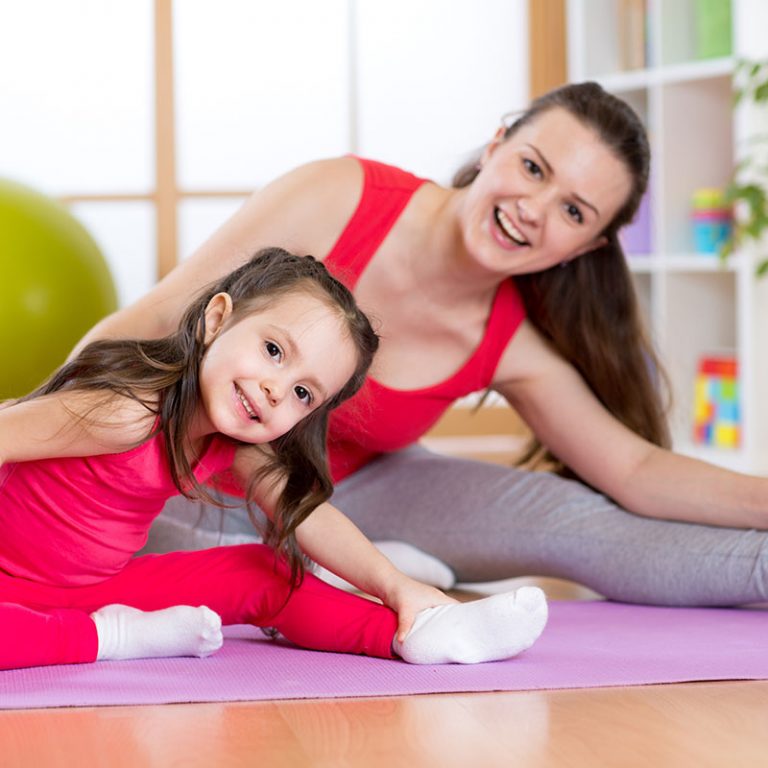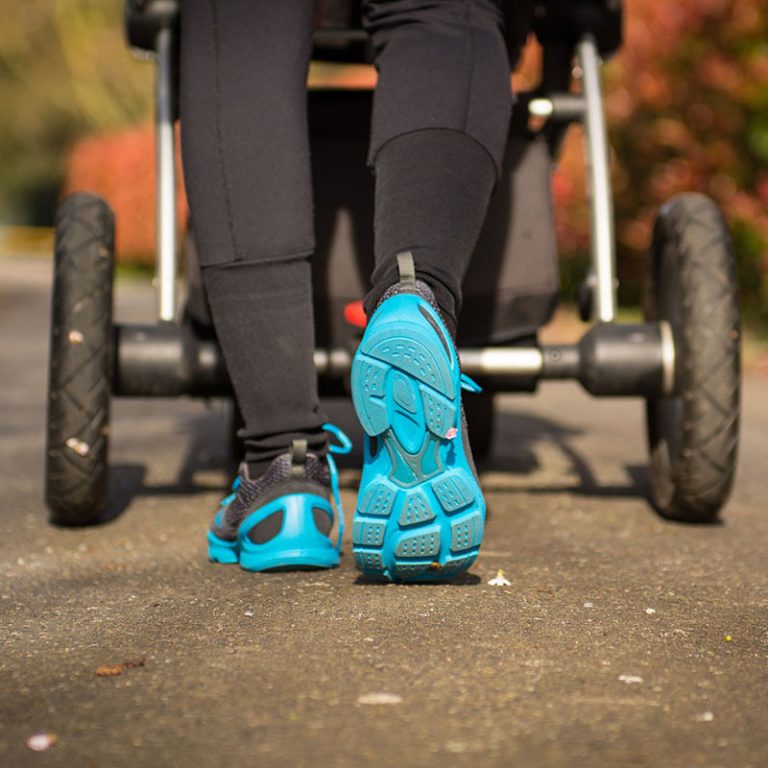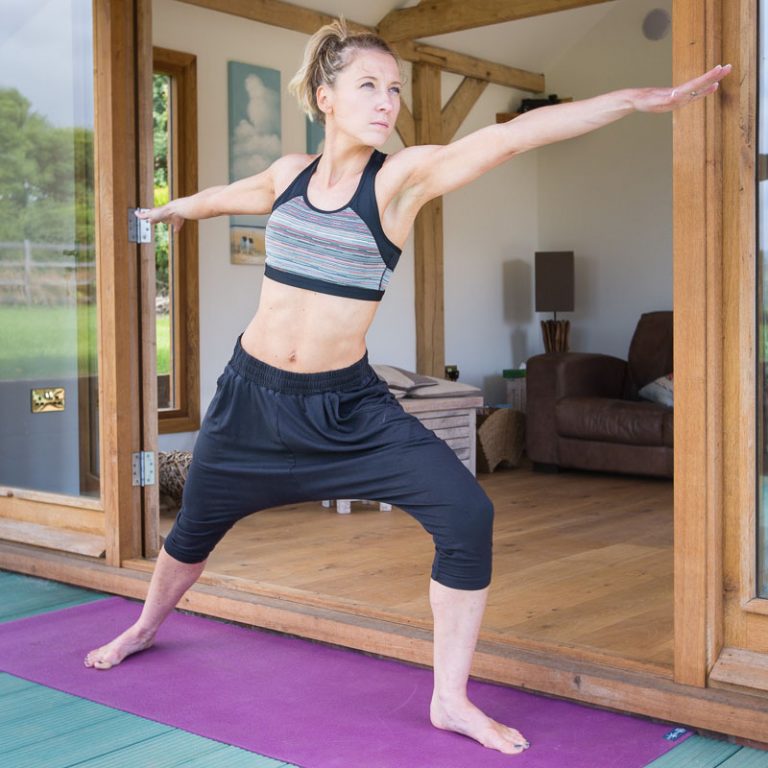Wonder Bump
Antenatal Exercises
Things to be aware of if partaking in exercise whilst pregnant.
Posture
the growing baby can throw your body weight forwards and tilt your pelvis forwards, making balance difficult. Be wary of over-compensating by increasing the curve of the lower back. Always be aware of keeping neutral spine alignment by lifting your chin and chest.
Relaxin
This hormone which relaxes the ligaments and separation of joint surfaces to accommodate the growing baby is produced around the second week of pregnancy and reaches its highest level by the end of the first trimester. The effect relaxin has on fibrous tissue in the body takes approximately 3-5 months after birth to return to normal. Due to the effect of this hormone, it’s best to incorporate smaller stances when the legs are placed wide apart, and avoid developmental stretches when lengthening muscles in pilates, yoga or in cool down stretches.
Energy
After 18 weeks, the body requires an additional 300 calories per day to meet the demands of pregnancy. If undertaking exercise, ensure you are consuming enough calories to compensate for those lost.
Blood sugar levels
Eat regularly. Pregnant ladies are more prone to hypoglycaemia or gestational diabetes as they burn increased levels of carbs and are more resistant to insulin. Snack 2-3 hours before and after exercise.
Body temperature
Maternal temperature is slightly raised by 0.5 degrees during pregnancy so it’s important to not undertake exercise that will further increase your temperature. Make sure you drink water, little and often.
Fitness level
If you have given up exercise in the first trimester but return during the second, the return should be gentle to cope with getting back to fitness following the break as well as the added demands of pregnancy.
Exercise Type
In your second and third trimesters, avoid exercises involving jumping to protect your pelvic floor muscles, and exercises involving lying on your back or standing for too long to avoid supine or postural hypotensive syndrome.
Abdominal muscles
During pregnancy, the ab muscles stretch both widthways and lengthways to accommodate the growing baby. Avoid any twisting and crunches during pregnancy once the muscles have begun to stretch. Abdominal muscles help to control the tilt of the pelvis and stabilise the spine so it’s important to exercise them and appropriate conditioning will help you to regain the strength and tone afterwards. Appropriate exercises are static abdominal contractions such as pelvic tilts, contracting the muscles on all fours, adapted half plank, and superman pose.
Please get in touch if would like any information or advice on keeping fit during pregnancy.
Antenatal Exercises
With your arms parallel to the floor, bend your knees, sitting back into your heels as you squeeze your bum and thighs. Keep squeezing your buttocks as you straighten your legs and return to starting position.
Feet placed hip width apart and your feet a comfortable distance away from the wall whilst your back is flat against the wall. You should have two right angles, one at your knees and one at your hips as you slide yourself down the wall and raise yourself back up again.
Stand parallel to a wall or the back of a sturdy chair with the hand closest to the chair resting on it. Keep your feet parallel and hip-distance apart. Ensure your legs are not too wide apart to avoid a risk of SPD (symphis pubis dysfunction).
With your toes and knees turned out to 45 degrees, pull your belly button up and in. Bend your knees, lowering your torso as low as possible while keeping your back straight. Straighten your legs to return to starting position.
Lying on your side, make sure your head is supported by your forearm. Bend your bottom leg and keep your top leg straight. Place your opposite arm on the floor to support for stability. Lift your top leg to about hip height and repeat for 10-15 reps. Follow up with 10-15 pulses.
Then, bend your top leg and rest it on top of a pile of pillows for support. Straighten your bottom leg and lift it as high as possible for 10-15 reps.
Switch sides.
On all fours, place your hands underneath your shoulders. Options here are to keep knees on the floor or lift them up by straightening legs and ensure your body forms a nice straight line from your neck down to tailbone or down to your ankles if knees are lifted. It’s important your back doesn’t arch or curve.
On all fours, hands stacked underneath shoulders and knees stacked underneath hips, push your breath out as you contract and pull your tummy muscles in and inhale deeply as you expand your diaphragm. You can also do pelvic squeezes in this position.
Still on all fours, rock your hips and pelvis slowly into a forward and back motion. Inhale, then exhale, round your back like a cat and hold for a few seconds then reverse the motion by inhaling and drawing and lifting your chest forward and up whilst you retract your shoulder blades back and again hold for a few seconds.
Sit on the edge of a sturdy chair or bench with your back straight, feet placed on the floor, arms lowered at your sides. Hold low-weight dumbbell or similar in each hand, palms facing up and knuckles facing out. Bend your elbows so your arms form a 90-degree angle. Lift the weight up to shoulder height and lower to starting position. Make you don’t overload with the weight so your back ends up arching.
Sat on a chair or bench, or stood with feet positioned either hip width apart or in split stance. Hold low-weight dumbbells or similar at either side of your body and slowly raise your arms laterally to just below shoulder height, keep elbows soft, knuckles facing out to either side and lower.
Sat on a chair with back support, or stood feet positioned either hip-width apart or in split stance, hold low-weight dumbbells or similar. Place them upright on top of your thighs. Raise weights to shoulder height, palms facing forward, elbows at 90 degrees. Push dumbbells up so they touch at the top and slowly lower to starting position.
Grab a chair or bench, bend one leg and place your knee on the seat and the other foot on the floor. Bend forward, back parallel to the floor, and place the hand that’s the same side as the bent knee on the seat. Hold a low-weight dumbbell or similar in your other hand and extend the arm down in line with your shoulder, palm facing in.
Bend the elbow up behind you so that your arm forms a 90-degree angle. Hold and return to starting position.
Use a yoga mat or non-slip surface for this one. Start on all fours, hands underneath your shoulders, knees under your hips. Tuck your toes under and spread you fingers wide. Exhale and straighten your arms and legs, pushing your tailbone towards the ceiling.
Allow your neck and shoulders to relax and push down towards your heels. Try to get them as close to the floor as possible but don’t lock the knees or hyperextend. Remember pregnant ladies are a lot more flexible due to the relaxin hormone.
Come back into the resting position on all fours and wait for a half a minute or so before repeating the pose. Don’t hold it for longer than feels comfortable.
From mountain pose (feet placed hip width apart, stand nice and tall), bend one knee shifting all the weight into the standing leg. Turn your bent knee outwards, resting the heel against the opposite leg. Stay here if you feel comfortable. To increase the intensity of this balance pose, slowly slide the foot up so the sole of the foot is placed against the inner thigh, grabbing the ankle for balance and positioning. Look down to help focus. Slowly bring the palms together in prayer position in front of the heart. Keep the standing leg nice and strong. If you would like to extend further, inhale to extend the arms over the head so they are in in H position or put your palms together with thumbs crossed. Long neck, shoulders back and down.
On all fours, extend your opposing leg and arm with other hand and knee supporting your stance, hold in your core as you reach up and out. Hold for 10 seconds and swap.
Step forward with one foot and make sure your knee does not go over your toes as you bend it. Ensure both feet are facing forwards and as you lower yourself towards the ground, both knees should be at 90 degree angles. You can increase the intensity of this exercise by adding low-weight dumbbells or similar.
On all fours. Raise one foot, keeping it flexed, and maintain the 90 degree angle as you raise your leg behind you. Then lower and bring your knee in towards your tummy. This works bum and core.
Options for position are on your knees or your toes. Place your hands wider than shoulder-width apart and keep your neck nice and long, looking down as you slowly lower your chest to the ground in between your palms.
Using a chair or bench, place both feet on the ground with knees at 90 degree angle or with one foot resting on the other leg to give yourself a nice strong base. Knuckles facing forward, elbows facing behind you, squeezing your shoulder blades together as you slowly lower yourself, bending your elbows to 90 degrees.
Sat down with back up against the wall or on all fours hands underneath shoulders and knees underneath hips. Carry out some short bursts of squeezes followed by long holds – focus on contracting both your front and back passages – like you’re stopping urine and keeping yourself from breaking wind at the same time. Try to imagine the different levels of your pelvic floor muscles – like you are going from ground level up in an elevator.
Try to fit in as many of these as possible.
Also, aim to do a set of 20-50 a day for the first few weeks post labour, it’ll make such a difference!






